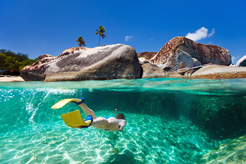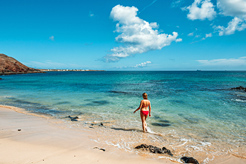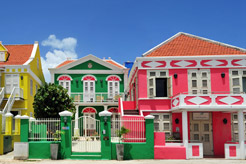- Book online & save up to 8% on Marella Cruises
- Discount varies by season. Book online with TUI
- Destinations across the Med, Caribbean & USA
British Virgin Islands weather by month
Check out the British Virgin Islands weather averages by month. Compare detailed monthly climate statistics including temperature, rainfall and sunshine figures.
| Jan | Feb | Mar | Apr | May | Jun | Jul | Aug | Sep | Oct | Nov | Dec | |
|---|---|---|---|---|---|---|---|---|---|---|---|---|
| Maximum daytime temperature °C | ||||||||||||
| Hours of sunshine (daily) | ||||||||||||
| Days with some rainfall | ||||||||||||
| Sea temperature °C |
More about the British Virgin Islands
British Virgin Islands by month
Jan Feb Mar Apr May Jun Jul Aug Sep Oct Nov Dec
Recommended for the British Virgin Islands
 Cruise deal finder
Cruise deal finder
The climate guide for British Virgin Islands (Tortola) shows long term monthly weather averages processed from data supplied by CRU (University of East Anglia), the Met Office & the Netherlands Meteorological Institute. Find out more about our data sources.
Top British Virgin Islands destinations
Below are average maximum temperatures at popular destinations in the British Virgin Islands for next month - May. Select a destination to see the climate guide for all months of the year.
All British Virgin Islands destinations
Metric (°C / mm) | Imperial (°F / inches)
British Virgin Islands climate overview
The Dutch and Spanish had previously settled this collection of volcanic islands in the Caribbean, before it became a British Territory in the late seventeenth century.
Today the British Virgin Islands, which lie about 80 kilometres (50 miles) to the east of Puerto Rico, govern their own internal affairs while remaining a British dependency. The economy relies mainly on the financial services industry, and on tourism.
The main island of Tortola is home to 75% of the population while the majority of the other 55 islands and cays are largely uninhabited. The islands have seemingly unlimited brochure-perfect beaches with white sands. The government keeps a close check on the tourist industry to ensure that no area becomes overdeveloped and crowded. As a result there is an abundance of idyllic deserted coastline.
The islands are characterised by secluded bays and coves, making them popular with boating enthusiasts who can hop from one deserted coral cay to the next. The islands' interiors are largely unspoilt with much of the indigenous dense sub-tropical vegetation remaining intact. On the whole the landscape consists of undulating hills, but some areas and a few islands, notably Anegada, are flat.
The British Virgin Islands have a tropical climate with warm to hot daytime temperatures throughout the year that vary by only a few degrees from month to month.
Rainfall is mainly concentrated in the months from the end of June to the end of November with a very short 'winter' dry season that runs from February to April. This is also the sunniest time of the year, broken only by a few afternoon clouds and occasional showers. However even during the peak rainy season, from September to November, when rain falls most afternoons, there is still plenty of sunshine.
Like most of the islands in the Northern Caribbean, The British Virgin Islands lie directly in the track of Atlantic hurricanes travelling from the centre of the Atlantic towards Florida and the Gulf of Mexico. The risk of a hurricane striking is greatest from July to October.
More about the British Virgin Islands
Compare British Virgin Islands with the USA
Below the British Virgin Islands chart shows average maximum daytime temperature for British Virgin Islands (Tortola) and the USA (Washington).
Maximum daytime temperature (°C)
Metric (°C / mm) | Imperial (°F / inches)
Compare more British Virgin Islands weather >>
Be inspired
Get your weekly fix of holiday inspiration from some of the world's best travel writers plus save on your next trip with the latest exclusive offers
We promise not to share your details
Related posts
Popular travel offers
Explore holidays in the sun for less
- Beach holidays
- Family holidays
- City breaks
- Summer holidays
- Winter sun holidays
- Holiday offers
- Top travel brands
- Airlines & flights
- Discount hotels
- Airport parking deals
- TUI
- Jet2holidays
- easyJet holidays
- Love Holidays
- British Airways
Airport parking
- Manchester Airport
- Stansted Airport
- Bristol Airport
- Luton Airport
- Birmingham Airport
- Edinburgh Airport
- Gatwick Airport
- Glasgow Airport
- Newcastle Airport
Airport lounges
- Manchester Airport
- Birmingham Airport
- Bristol Airport
- Edinburgh Airport
- Glasgow Airport
- Heathrow Airport
- Newcastle Airport
- Stansted Airport
- Gatwick Airport

























